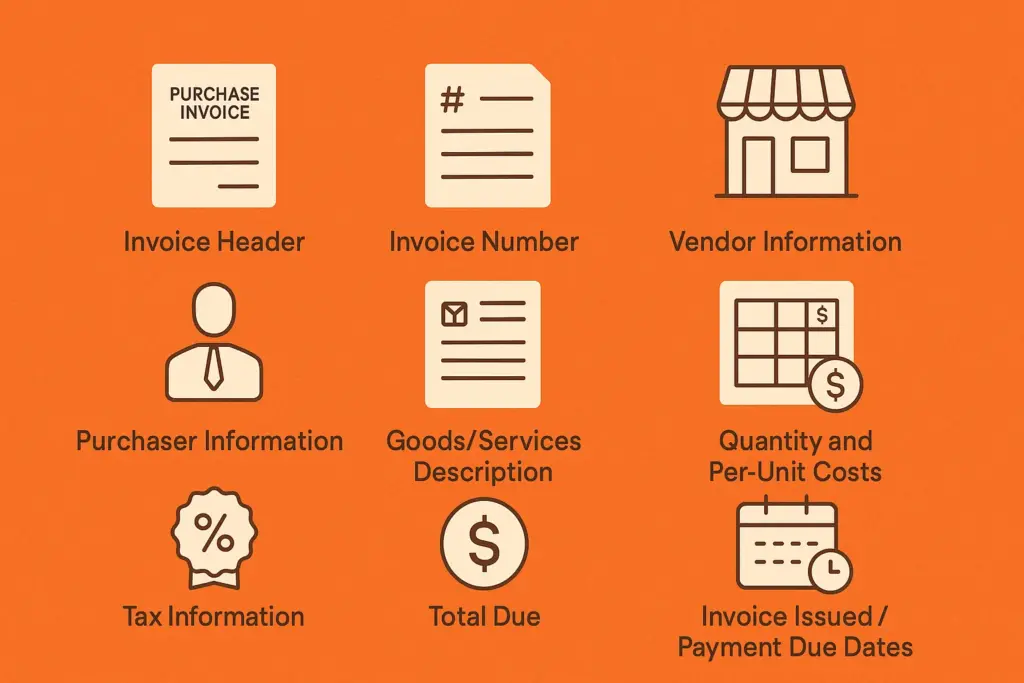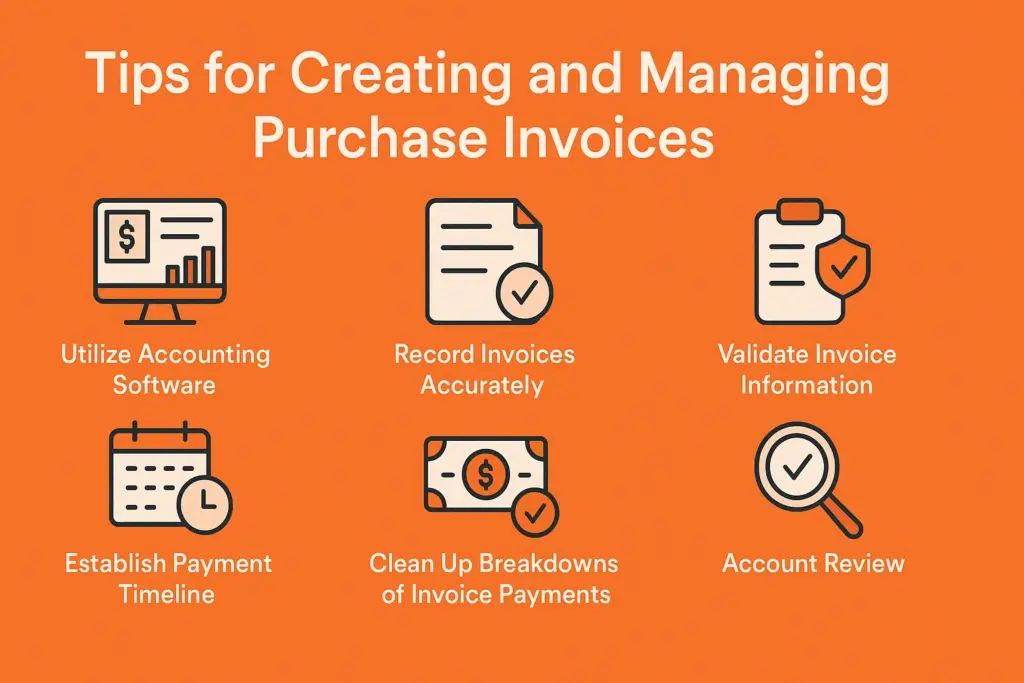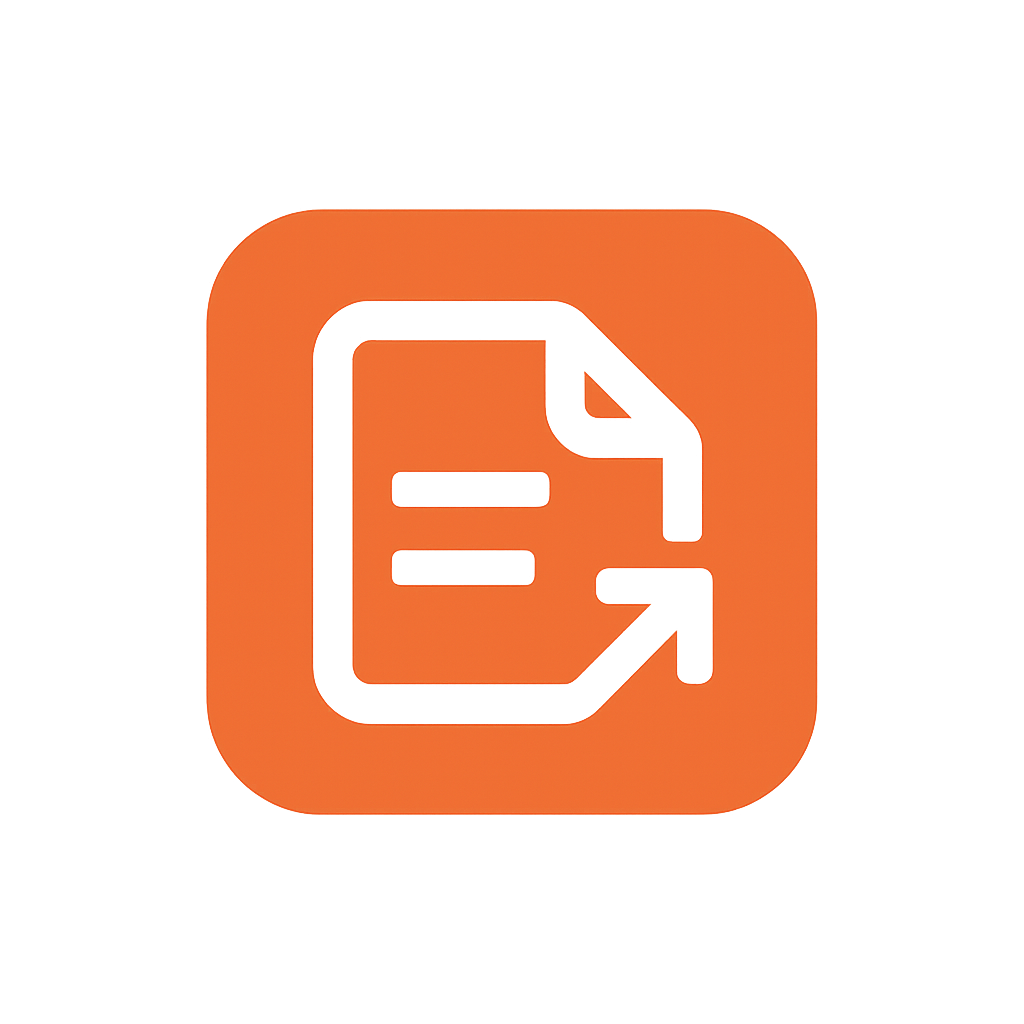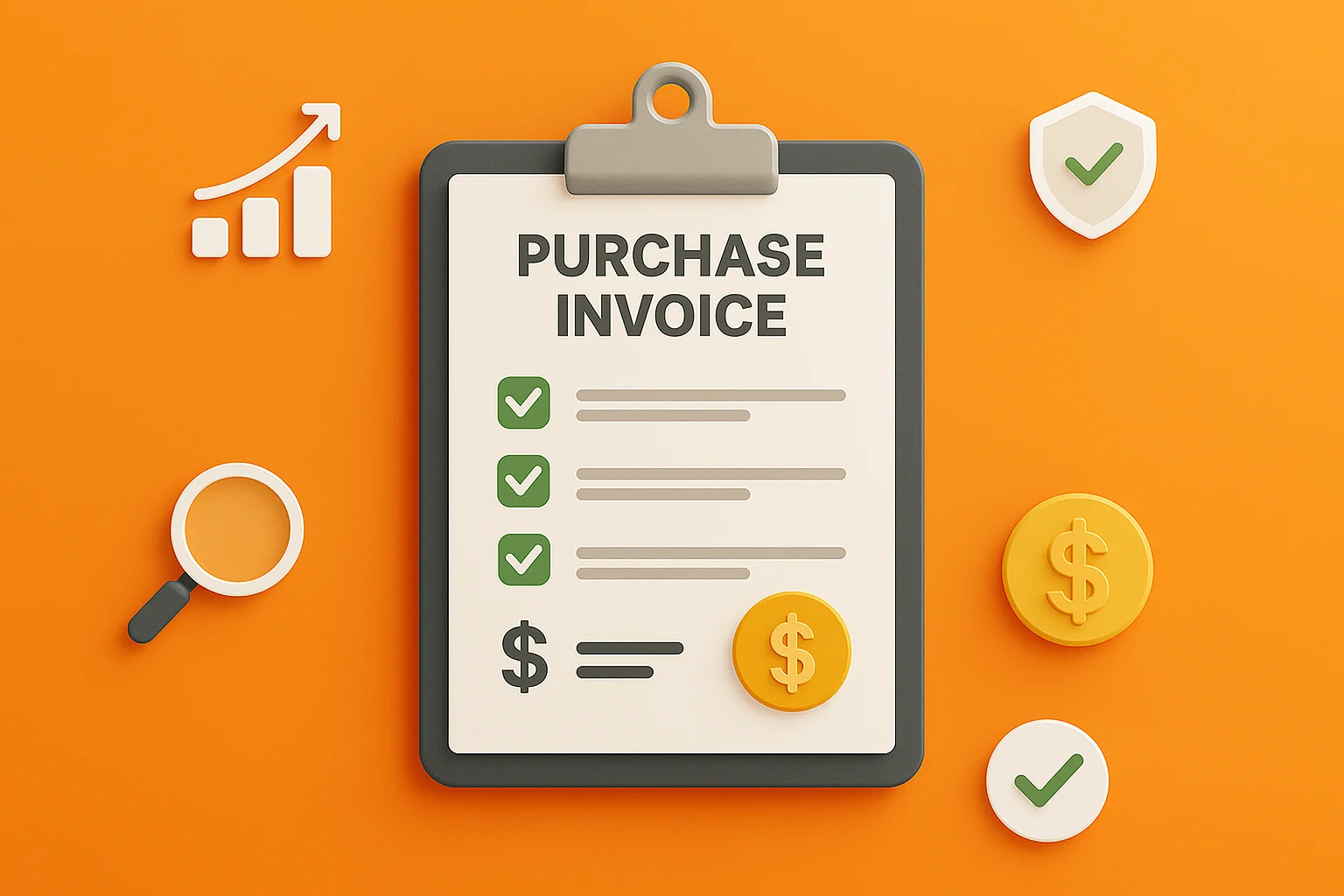One of the most important documents in any business operation is a purchase invoice. A purchase invoice is an official record of your goods or services purchased listing the supplier, costs, payment terms, and other information. Whether you are an owner of a small business deciding to purchase products for resale or are in an organization that makes a buy for the services provided by a construction company to build a building, it is important to be able to understand and manage a purchase invoice in order to expedite the financial process and compliance of your accounting procedures.
What is a Purchase Invoice?
A purchase invoice is a financial document created by a vendor or supplier to a buyer to outline the items or services sold, including quantities, prices, and payment terms. It also demonstrates the quantity and value of the transaction. It is basically the supplier’s way of letting the buyer know the cost of purchased goods or services.For example, if a supplier sends their customer a purchase invoice for office supplies, they would include a list of goods that were delivered, their costs, and the payment due date.
Importance of Purchase Invoice in Business
Purchase invoices are extremely important to a business for several reasons.
- Financial Tracking: Purchase invoices assist in accurately tracking expenses for the business. If businesses need to access previous expenses, they can reference purchase invoices to have a clear picture of cash flow leaving the business, allowing better financial planning.
- Tax Compliance: Purchase invoices have become an important document for taxes. They are a key proof of expenses and tax deductions. If there ever was to be a tax audit for your business, having purchase invoices would be useful.
- Inventory Management: All good inventory management has to have purchase invoices. Purchase invoices are proof of quantities and types of goods received, which means they are even more important than simply tracking funds out.
- Disputes: If there is ever any disagreement between the buyer and supplier on amounts delivered or the cost, having a purchase invoice would eliminate the hassle for both parties and provide a more formal reference point.
- Audit and Transparency: By managing purchase invoices, your business books become that much easier to be fully transparent and audited.
Key Components of a Purchase Invoice
An ordered and descriptive purchase invoice generally includes the following features:
Invoice Header: The document should be clearly marked as a “Purchase Invoice,” so as not to be confused with other documents.

- Invoice Number: A unique number for tracking and referencing purposes.
- Vendor Information: The name, address, and contact details of the supplier.
- Purchaser Information: The name and contact information of the recipient to whom the invoice is addressed.
- Goods/Services Description: A detailed description of the services and/or goods provided, including item codes when applicable.
- Quantity and Per-Unit Costs: The purchase order needs to reflect a total number of goods purchased and the per-unit cost.
- Tax Information: The applicable sales tax, VAT, or GST is included in the total. Total DueThe amount owed, all taxes and/or fees should be included in the final charge.
- Payment Terms: Invoice should specify the date the payment is due, acceptable payment methods, and any penalties for late payments.
- Invoice Issued/Payment Due Dates: The date the invoice was issued and the deadline to make the payment, should be agreed upon.
How Does a Purchase Invoice Differ from Other Financial Documents?
While there are similarities in the orchestration of the terms, a purchase invoice is different, thus, making it different from other accounts payable documents.
- Purchase Order vs. Purchase Invoice: A purchase order is made by the buyer requesting goods or services to be provided. A purchase invoice is created by the supplier of goods or services requesting payment for the fulfillment of the order.
- Sales Invoice vs. Purchase Invoice: A sales invoice is produced by the seller to show proof of sale. A purchase invoice is received by a buyer to record the expense related to an account payable transaction.
- Receipt vs. Purchase Invoice: A receipt will confirm payment has been made after the goods or services are provided whereas, in contrast, a purchase order outlines what is to be purchased, which facilitates payment.

Tips for Creating and Managing Purchase Invoices
Efficient processing of purchase invoices will allow for more efficient financing and improve cash flow. Below are some tips for best practices:
- Utilize Accounting Software: Ensure you have software programs to generate and store invoices quickly and efficiently (for example: Xero, Quickbooks). Accounting software will reduce mistakes, and save time.
- Record Invoices Accurately: For record-keeping purposes, invoice records should easily be available, and organized by date, vendor, or invoice number. With today’s cloud storage options, access is easier than ever before.
- Validate Invoice Information: If you are generating or issuing invoices at your business alternative periodically review them for accuracy and compliance. Disputes can arise or invoice payments can be delayed when invoices are inaccurate.
- Establish Payment Timeline and Expectations: By being upfront about your expectation regarding payment, you will not have any confusion, or if thinking about it, motivate your customer’s timeliness to pay.
- Clean Up Breakdowns of Invoice Payments: Make sure to continually monitor past due payments for invoices, when cash flow is tight the last thing you need is extra problems. If accounts become past due and continue to lag, send out periodic reminders.
- Account Review: You should consider reviewing and conducting regular audits of the invoices you generate, in order to keep your records accurate and with the recent accounting software, you can keep track of any documentation related to any purchases.
Conclusion
Purchase invoices are more than just records of transactions; they may be essential tools for tracking fees, maintaining accurate monetary statistics, and ensuring compliance with tax policies. By expertise in their key components, along with purchaser and seller details, payment phrases, and general amounts, businesses can save you errors and stay prepared.
Managing buy invoices correctly allows streamline operations, reduce disputes, and guide better cash waft management. Simple practices like the use of accounting software program, validating info, and setting clean charge phrases can make a massive distinction in performance.
When businesses prioritize retaining properly-prepared and accurate buy invoices, they no longer best beef up provider relationships however also set a strong basis for long-time period success. Take those steps these days to raise your financial procedures and hold your operations walking seamlessly.
Create Invoices Instantly – Free & Easy!
Generate professional invoices in seconds with our Free Online Invoice Generator.
👉 Try the Invoice Generator Now

Leave a Reply